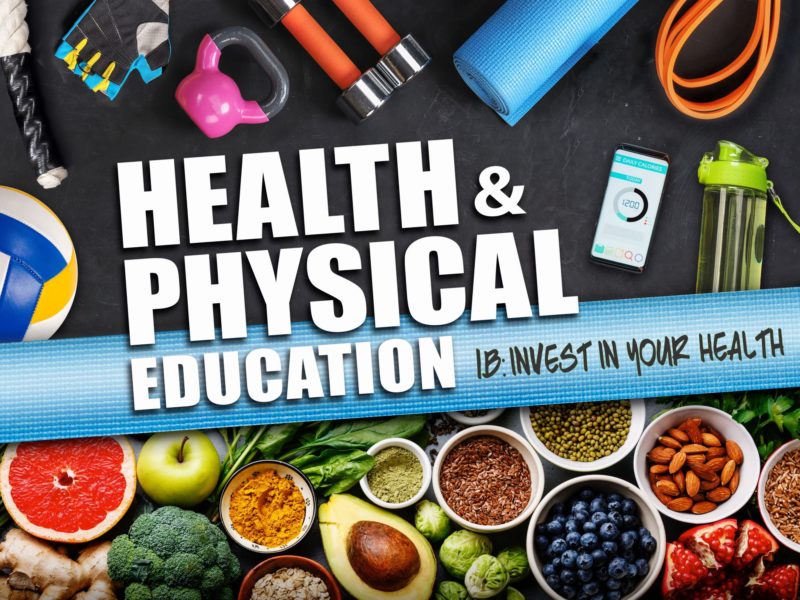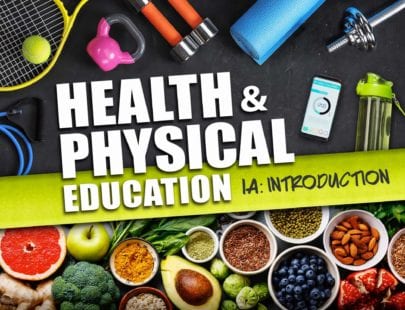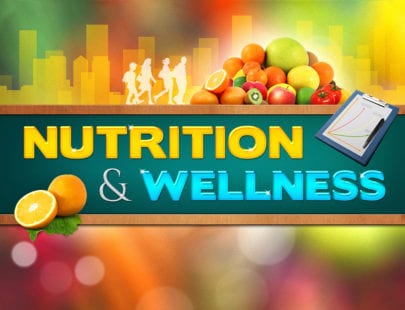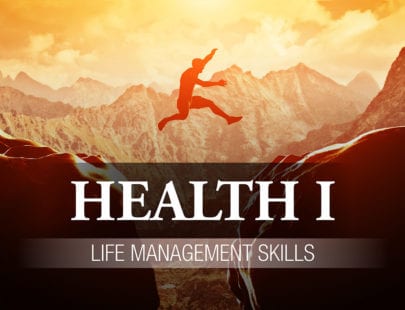
Health & Physical Education 1b: Invest in Your Health
You’ve already HIIT the mat and warmed up your understanding of health and fitness, but now we’re going to stretch you’re understanding and feed your healthy habits. In this course, you will learn about the four domains of health- physical, mental, emotional, social- and their interconnection, how to set goals for healthy living, and how relationships and choices can impact your health. You’ll also explore different entities and influences and their role in your daily health as well as how to build healthy communities to help you thrive. Let’s continue building the foundation for well-rounded, healthy living so you can flourish: mind, body, and spirit!
Units at a Glance
Unit 1: Healthy, Defined
What do you think it means to be healthy? Daily exercising? Eating salads for lunch? While good health does include physical activity and eating nutritious foods, it encompasses much more than that. In the simplest terms, being healthy means taking care of the body and the mind. But our emotions and our relationships also play important roles in our sense of well-being. What does it take to get and remain healthy? Access to professional health care is important, though assessing and caring for our mental, emotional, and social health are just as necessary. As you will discover, good health is holistic and includes multiple interconnected domains.
What will you learn in this unit?
- Analyze various definitions of health
- Evaluate the relationship between access to health care and health status
- Identify the factors that contribute to mental health
- Investigate the relationship between our thoughts, emotions, and behavior
- Determine the importance of our social relationships to our overall health and wellness
- Describe the interrelationships of our physical, emotional, mental, and social health
Unit 2: Diseases, Disorders, and Disasters
Individual health can be impacted by a number of things. Disease, whether inherited or acquired, is one important factor that impacts health. Being aware of how disease is spread in communities or passed down through families helps you protect yourself and alerts you to be on the lookout for what may affect your future wellness. Disorders, such as those affecting mental health, are another important aspect to consider. Thankfully, there are several types of mental health professionals and services that are proven to help. Knowing when and how to access these services can mean the difference between a successful outcome or being stuck in an ongoing cycle of poor mental health. And of course, sometimes our health can be impacted by factors outside of our control, such as natural disasters – but even if disaster strikes, there are still things we can do to prepare and be as safe as possible. While diseases, disorders, and disasters may threaten us, with education and action we can be ready to take them on!
What will you learn in this unit?
- Determine how heredity and family history can impact personal health
- Examine issues contributing to mental health
- Analyze strategies for responding to accidental injuries
- Explain measures one can take to ensure their personal safety
Unit 3: Behavioral Impacts
We frequently hear that smoking is unhealthy, but why? What about marijuana? It’s legal in some states — so, how does using it impact health? Here, we will analyze behaviors like smoking, drinking alcohol, and sexual activities. We also will take a deeper look at drugs, both legal and illegal, and find out what is safe use and what constitutes delving into dangerous territory. Examining these behaviors from various angles will give us a more comprehensive lens by which to analyze our choices. Afterall, throughout life, we all must face important decisions regarding behaviors that can pose serious health risks. Becoming informed about how these things affect your health can help you make informed decisions. In fact, internalizing and applying this knowledge may someday mean the difference between life and death.
What will you learn in this unit?
- Explain the difference between safe use of prescription drugs and unsafe use of legal (and illegal) drugs
- Examine the effects of smoking on body systems
- Critique health risk behaviors associated with alcohol use
- Analyze the potential consequences of having unprotected sex on physical, emotional, and social health
Unit 4: Key Players in our Health
Although some elements of health are primarily controlled by individuals, other aspects are addressed by society as a whole. Health is often regulated by the government, with the FDA and other departments devoted to ensuring that healthy and honest products are on the shelves and that regulations are put into place to protect us from health dangers. Schools are places where aspects of health care can be universally administered, and daily practices like education in nutrition and physical fitness seek to improve health outcomes for all children. Technology too, plays a major role in our health, allowing for continual advancement in testing, treatments, and procedures. Media outlets, as well as companies with their own agendas, also have a large influence on what a community perceives as healthy and not healthy. And finally, a person’s environment, including where they live, can determine many health risks and benefits. Here, we’ll dive deeper into these topics and discover key players in the outside factors that influence our health.
What will you learn in this unit?
- Analyze how public health policies and government regulations can influence health promotion and disease prevention
- Assess how the school and community can affect personal health practice and behaviors
- Investigate the impact of technology on individual and community health
- Evaluate the health messages delivered through media and technology
- Examine the influence the environment has on personal health
Unit 5: Our Relationships and Our Health
It’s no surprise that the people around us impact us in many ways, including our health. First, culture affects our health, so we’ll consider the “norms” embedded in our own culture and its contribution to our health beliefs. Next, the families we are raised in influence our health, particularly when it comes to nutrition and exercise. Our friends have a loud voice on health issues too, as social pressures can point us toward better health or move us further away from it. Once we determine the major relational influences on our health, we will then consider how we can improve our social impact: what we can do to become a better friend, partner, family member, and coworker? Several skills can set us up for good relational health: empathy, perspective-taking, and respect for diversity, to name a few. The good news is that social health can always be improved upon, and improving relationships means improving our wellbeing—so it’s worth every effort.
What will you learn in this unit?
- Analyze how the perceptions of norms and culture influence health
- Assess how one’s family influences different aspects of individual health
- Evaluate the positive and negative effects of peer relationships on physical, emotional, and mental health
- Determine strategies to build social awareness and relational wellness
Unit 6: Improving Your Health
Self-management is the art of taking ownership of your health. Successful self-management requires moving from a defensive position, where you merely react and respond to events as they unfold, to an offensive one, where you take action in advance to create the outcome you’re hoping for. Knowing that you have what it takes to steer your future in a healthier direction is the first step. To improve our health, we need to make wise decisions and set achievable goals. We will evaluate our current health status in all domains, make proactive plans for improvement, and determine which habits will help us be successful. Being proactive about physical health includes getting regular medical care and engaging in healthy habits like nutritious eating and frequent exercise. Improving our mental and emotional health relies on proactively pursuing self-care and ensuring stress relief becomes routine maintenance. Social health is evaluated by looking closely at both friendships and romantic partnerships, and proactively making decisions about which relationships are serving you well. Soon, you’ll be fully equipped and ready to take an offensive and proactive position in your life to improve your health!
What will you learn in this unit?
- Determine the value of applying a thoughtful decision-making process in health-related situations
- Identify decision-making skills that promote individual, family, and community health
- Formulate a plan to attain a personal health goal that addresses strengths, needs, and risks
- Implement strategies to monitor and improve physical health status
- Evaluate mental, emotional, and social health status and practice effective mental health and relationship management strategies
Unit 7: Food as Fuel
Just as cars rely on gasoline to move, our bodies rely on food to provide us with the fuel we require to do the things we need to do. Here, we will examine our diets and eating habits and determine whether we are getting enough calories and nutrients to maintain proper functioning. Just as gasoline is available in various qualities, like regular, mid-grade, or premium, differences in food quality affect our bodies’ performance as well, which in turn affects our quality of life. One of the clearest ways we can improve our health is by learning about nutrition and paying attention to our diet. But sometimes the vast amounts of nutrition information can be tricky to navigate. Are all fats bad for you? Which vitamins and supplements are most beneficial? We’ll answer these questions and more – after all, understanding how to evaluate the array of information available will help ensure that you make wise nutritional choices.
What will you learn in this unit?
- Explain the relationship between nutrition, quality of life, and disease
- Critique the validity of health information and products
- Describe the causes, symptoms, and treatment of eating disorders
- Determine ways to improve individual diets, and evaluate how to make adjustments for various lifestyles
Unit 8: Healthy Communities and Relationships
Communities can do a lot to promote the health of their members. Just being part of a community brings health advantages, and when those in a local community seek to make bettering health a priority, everybody benefits. So just what makes a healthy community? Taking care of yourself is always the first step; the next is thinking about what you can do to help those around you improve their physical, emotional/ mental, or social health. A healthy community relies on people working together toward positive change. Sometimes it’s appropriate to use persuasion, other times you might need to advocate for healthy change in your school, neighborhood, or city. So, how exactly can you set out to improve the health of your particular community? Let’s find out!
What will you learn in this unit?
- Analyze the impact of the availability of health services in your community and the world
- Discuss health-related social issues such as organ donation, human trafficking, and homelessness
- Explain the benefits of positive relationships for promoting a healthy community
- Demonstrate and apply communication skills that show respect for others
- Evaluate the effectiveness of conflict resolution techniques in various situations
Required Materials
Physical
- Video recording device
- Audio recording device
- Camera
- Paper
- Markers
- Pencil or pen
Software
- Word processing software
- Spreadsheet software
- Presentation software
Other
- Health Inventory Table
- Calorie-counting application or website
Optional
- Digital design software




